Pioneer ND-BC6 Handleiding
Pioneer
Bewakingscamera
ND-BC6
Bekijk gratis de handleiding van Pioneer ND-BC6 (16 pagina’s), behorend tot de categorie Bewakingscamera. Deze gids werd als nuttig beoordeeld door 100 mensen en kreeg gemiddeld 4.6 sterren uit 50.5 reviews. Heb je een vraag over Pioneer ND-BC6 of wil je andere gebruikers van dit product iets vragen? Stel een vraag
Pagina 1/16

PIONEER CORPORATION
1-1, Shin-ogura, Saiwai-ku, Kawasaki-shi, Kanagawa 212-0031, JAPAN
PIONEER ELECTRONICS (USA) INC.
P.O. Box 1540, Long Beach, California 90801-1540, U . . .S A
TEL: (800) 421-1404
PIONEER EUROPE NV
Haven 1087, Keetberglaan 1, B-9120 Melsele, Belgium/Belgique
TEL: . .(0) 3/570 05 11
PIONEER ELECTRONICS ASIACENTRE PTE. LTD.
253 Alexandra Road, #04-01, Singapore 159936
TEL: 65-6472-7555
PIONEER ELECTRONICS AUSTRALIA PTY. LTD.
5 Arco Lane, Heatherton, Victoria, 3202 Australia
TEL: (03) 9586-6300
PIONEER ELECTRONICS OF CANADA, INC.
340 Ferrier Street, Unit 2, Markham, Ontario L3R 2Z5, Canada
TEL: 1-877-283-5901
TEL: 905-479-4411
PIONEER ELECTRONICS DE MEXICO, S.A. de C.V.
Blvd Manuel Avila Camacho 138 10 piso.
Col Lomas de Chapultepec, Mexico, D. .F. 11000
TEL: 55-9178-4270
© 2012 PIONEER CORPORATION .
All rights reserved .
© 2012 PIONEER CORPORATION .
Tous droits de reproduction et de traduction
réservés.
Printed in China
Imprimé en Chine
<231 0005150Y> EL<KYTNX> <12G00000> .
Owner’s Manual
Mode d’emploi
UNIVERSAL REAR-VIEW CAMERA
CAMERA DE RECUL UNIVERSELLE
ND-BC6
① Glass surface
② Make sure it doesn’t touch the wiper
③ Install on the center part
Fig. 1
Abb. 1
𝖠 Rear view camera Power supply unit × 1 𝖢× 1𝖡 RCA power supply cable × 1
𝖣 Hexagon wrench × 1 𝖤 Hook and loop fastener
(soft type) × 1
𝖥 Hook and loop fastener
(hard type) × 1
𝖧 Waterproof
pad × 1
𝖦 Clamp × 6 𝖨 Double-sided
tape × 1
Fig. 4
Abb. 4
Fig. 8
Abb. 8
Fig. 6
Abb. 6
Fig. 9
Abb. 9
② Bumper or rear edge of car
① Power supply unit
② Hook and loop
fastener
(hard type)
③ Hook and loop
fastener
(soft type)
① Camera
stand
Fig. 2
Abb. 2
Fig. 3
Abb. 3
This device complies with part 15 of the FCC
Rules.
Operation is subject to the following two
conditions:
(1) This device may not cause harmful interference,
and (2) this device must accept any interference
received, including interference that may cause
undesired operation.
Information to User
Alteration or modifications carried out without
appropriate authorization may invalidate the user’s
right to operate the equipment.
Note:
This equipment has been tested and found to comply
with the limits for a Class B digital device, pursuant
to Part 15 of the FCC Rules. These limits are
designed to provide reasonable protection against
harmful interference in a residential installation.
This equipment generates, uses and can radiate radio
frequency energy and, if not installed and used in
accordance with the instructions, may cause harmful
interference to radio communications. However, there
is no guarantee that interference will not occur in a
particular installation. If this equipment does cause
harmful interference to radio or television reception,
which can be determined by turning the equipment
off and on, the user is encouraged to try to correct
the interference by one or more of the following
measures:
• Reorient or relocate the receiving antenna.
• Increase the separation between the equipment and
receiver.
• Connect the equipment into an outlet on a circuit
different from that to which the receiver is
connected.
• Consult the dealer or an experienced radio/TV
technician for help.
If you want to dispose this product, do not
mix it with general household waste. There
is a separate collection system for used elec-
tronic products in accordance with legisla-
tion that requires proper treatment, recovery
and recycling.
Private households in the member states of the EU,
in Switzerland and Norway may return their used
electronic products free of charge to designated col-
lection facilities or to a retailer (if you purchase a
similar new one). For countries not mentioned above,
please contact your local authorities for the correct
method of disposal. By doing so you will ensure that
your disposed product undergoes the necessary treat-
ment, recovery and recycling and thus prevent poten-
tial negative effects on the environment and human
health.
WARNING:
Handling the cord on this product or cords associated
with accessories sold with the product may expose
you to chemicals listed on proposition 65 known to
the State of California and other governmental enti-
ties to cause cancer and birth defect or other repro-
ductive harm. Wash hands after handling.
IMPORTANT
SAFEGUARDS
• Installation and wiring of this product require spe-
cialist skill and experience. To assure your safety,
please request a specialist technician to install the
unit.
• Do not attempt to heat the surface of the camera
lens or camera lens itself with a lighter and so on
when they have become frozen. This can cause a
malfunction.
• This product is a rear view camera for checking
the view at the rear of a car.
A rear view camera is a camera that provides sym-
metrical images in the same way as rear and side
view mirrors.
• Connection to a TV with an RCA video input is
possible, but confirm whether the TV you use has
a reverse gear connection function.
• This product is designed to supplement the driver’s
rear view, but the camera images do not show all
dangers and obstacles. Be sure to look behind you
when reversing to confirm the view.
• This product features a wide-angle lens, so the
near view is wide and the far view is narrow,
which may create a false sense of distance. Be
sure to look behind you when reversing to confirm
the view.
• Do not wash your car with an automatic car wash
or high-pressure water as it may result in water
entering the camera or the camera falling off.
• Check camera stand installation before driving.
– Are the screws loose?
– Is the camera stand firmly secured?
– If the rear view camera comes loose while you
are driving it may cause an accident.
• This product by itself does not display guidelines.
⑥ Be sure not to hide any part of the char-
acters on the license plate when attaching
the camera.
Fig.5
Abb. 5
00-00
Fig. 7
Abb. 7
② Top
③ Mark
④ Bottom
⑤ Make sure to install the rear view camera so
that the mark is located on top of the camera.
① Hexagon wrench


3. Adjust the angle so that the bumper
or rear edge of the car is displayed
at the bottom of the TV screen.
(Fig. 6, Fig. 7, Fig. 8)
① Hexagon wrench
② Bumper or rear edge of car
4. Attach the power supply unit.
(Fig. 9)
Affix the Hook and loop fastener (hard
type) to the bottom of the power supply
unit, and affix the Hook and loop fastener
(soft type) to the mounting location.
① Power supply unit
② Hook and loop fastener (hard type)
③ Hook and loop fastener (soft type)
• You can use Hook and loop fastener (hard
type) to attach directly to a carpet, but do not
use the soft type.
• Install the power supply unit close enough
for the rear view camera cable to reach.
Installation <ENGLISH>
Parts supplied
𝖠 Rear view camera × 1
𝖡 RCA power supply cable × 1
𝖢 Power supply unit × 1
𝖣 Hexagon wrench × 1
𝖤 Hook and loop fastener (soft type) × 1
𝖥 Hook and loop fastener (hard type) × 1
𝖦 Clamp × 6
𝖧 Waterproof pad × 1
𝖨 Double-sided tape × 1
Installation example (Fig. 1)
① Glass surface
② Make sure it doesn’t touch the wiper
③ Install on the center part
Installation procedure
Notes:
• Before making a final installation of the unit,
temporarily connect the wiring to confirm that
the connections are correct and the system works
properly.
• Use only the parts included with the unit to ensure
proper installation. The use of unauthorized parts
can cause malfunctions.
• Consult with your nearest dealer if installation
requires the drilling of holes or other modifications
of the vehicle.
• Install the unit where it does not get in the driver’s
way and cannot injure the passenger if there is a
sudden stop, like an emergency stop.
• When mounting this unit, make sure none of the
leads are trapped between this unit and the sur-
rounding metalwork or fittings.
• To prevent electric shock, do not install the power
supply unit in places where it might come in con-
tact with liquids.
• Do not mount this unit near the heater outlet,
where it would be affected by heat, or near the
doors, where rainwater might splash onto it. (Never
install in locations such as the above because of
the danger of malfunction due to high tempera-
tures.)
• Before drilling any mounting holes always check
behind where you want to drill the holes. Do not
drill into the gas line, brake line, electrical wiring
or other important parts.
• If this unit is installed in the passenger compartment,
anchor it securely so it does not break free while the
car is moving, and cause injury or an accident.
• If this unit is installed under a front seat, make
sure it does not obstruct seat movement. Route
all leads and cords carefully around the sliding
mechanism so they do not get caught or pinched in
the mechanism and cause a short circuit.
• Install the unit near the center of the car.
• Locate in the position you want to install the rear
view camera. Adjust the angle of the rear view
camera, and install so that the camera doesn’t
touch the car.
• When sticking to a glass surface, stick it on in a
position that assures the camera doesn’t touch the
rear window.
• Install so that it does not obstruct the rear field of
view.
• Install so that it does not protrude from the side of
the car.
• Do not perform installation in rain or fog.
• When humidity is high, dry the surface to which
the unit is to be attached before installing. Moisture
on the attachment surface reduces adhesive strength
which may lead to the unit coming off.
• If the temperature of the attachment surface is
low, warm with a hair dryer of other means before
installing to improve adhesive strength.
• Do not attach the camera stand to areas on the car
body treated with fluorocarbon resin, or glass. This
may result in the rear view camera falling off.
• During the 24-hour period after installing:
– Do not apply water to the unit.
– Do not expose the unit to rain.
– Do not subject the camera to unnecessary force.
• Thoroughly clean where tape is used for sticking
on the unit.
1. Clean the surface to which the rear
view camera is to be installed.
(Fig. 2)
Use a cloth or other item to wipe oil, wax,
dust and any other dirt from the installation
surface.
2. Peel off the sheet on the back of the
camera stand and stick it on. (Fig. 3,
Fig. 4, Fig. 5)
Press the camera stand with your fingers to
stick it to the installation surface. Touching
the adhesive surface or sticking the unit
on a second time reduces adhesive power
which may result in the unit coming off.
① Camera stand
② Top
③ Mark
④ Bottom
⑤ Make sure to install the rear view camera so
that the mark is located on top of the camera.
⑥ Be sure not to hide any part of the characters
on the license plate when attaching the cam-
era.
Installation <FRANÇAIS>
Pièces fournies
𝖠 Caméra de recul × 1
𝖡 Câble à fiche Cinch (RCA) d’alimentation × 1
𝖢 Alimentation × 1
𝖣 Clé six pans × 1
𝖤 Bande Velcro (souple) × 1
𝖥 Bande Velcro (rigide) × 1
𝖦 Attaches × 6
𝖧 Garniture étanche × 1
𝖨 Ruban adhésif double-face × 1
Exemple d’installation (Fig. 1)
① Surface vitrée
② Assurez-vous que la caméra ne gêne pas
l’essuie-glace
③ Installez sur la partie centrale
Procédure d’installation
Remarques :
• Avant de finaliser l’installation de l’appareil,
connecter temporairement le câblage pour s’assurer
que les connexions sont correctes et que le système
fonctionne convenablement.
• Pour effectuer convenablement l’installation, utilisez
les pièces fournies et procédez comme il est indiqué.
L’utilisation de pièces autres que celles fournies peut
endommager l’appareil.
• Avant d’effectuer un perçage ou une modification du
véhicule, consultez le concessionnaire.
• N’installez pas l’appareil dans un endroit où il pourrait
gêner le conducteur ou blesser un passager en cas de
freinage brusque, par exemple pour un arrêt d’urgence.
• Veillez à ce que les câbles ne puissent pas être pincés
entre l’appareil et les pièces métalliques environnantes.
• Pour éviter les chocs électriques, n'installez pas
l'alimentation là où elle risque d'être en contact avec des
liquides.
• N’installez pas cet appareil près d’une bouche de
chauffage car la chaleur dégagée peut l’endommager;
pareillement, évitez la proximité des portières
car il pourrait être éclaboussé par la pluie ou les
intempéries. (Ne jamais installer cet appareil dans
des emplacements tels que ceux indiqués ci-dessus,
à cause des risques de dysfonctionnement causés par
des températures trop élevées.)
• Avant d’effectuer un perçage requis par l’installation de
l’appareil, assurez-vous que vous pouvez le faire sans
danger pour les câbles, canalisations, flexibles, etc., qui
sont placés derrière le panneau que vous devez percer.
• Si vous installez l’appareil dans l’habitacle, veillez à
ce qu’il soit bien ancré de manière qu’il ne puisse pas
provoquer une blessure ou un accident en raison du
déplacement du véhicule sur la route.
• Si vous choisissez d’installer l’appareil sous un siège
avant, veillez à ce qu’il ne gêne pas la manoeuvre du
siège. Faites cheminer les câbles et les conducteurs de
telle manière qu’ils ne puissent pas gêner le réglage du
siège ni être endommagés par son déplacement, ce qui
pourrait provoquer un court-circuit.
• Installez l’appareil près du centre de la voiture.
• Déterminez l’emplacement où vous désirez installer la
caméra de recul. Réglez l’inclinaison de la caméra et
fixez-la de telle sorte qu’elle ne touche pas le véhicule.
• Si vous la fixez à une surface vitrée, choisissez un
endroit où la caméra ne risque pas d’entrer en contact
avec la vitre arrière.
• Installez la caméra de façon qu’elle n’obstrue pas le
champ de vision vers l’arrière.
• Choisissez un emplacement tel que la caméra ne fasse
pas saillie sur un côté du véhicule.
• N’effectuez pas l’installation par temps de pluie ou de
brouillard.
• Si l’humidité est élevée, séchez préalablement la surface
de pose. L’humidité réduit la puissance de l’adhésif et la
caméra peut ultérieurement se détacher.
• Si la température de la surface de pose est basse,
réchauffez-la à l’aide d’un sèche-cheveux, ou tout
autre moyen convenable, de manière à tirer parti de
toute la puissance de l’adhésif.
• Ne fixez pas le support de la caméra à un élément de
la carrosserie traité avec une résine fluorocarbonée, ni
à un élément en verre. La caméra pourrait se détacher.
• Au cours des 24 heures qui suivent l’installation :
– Ne mouillez pas la caméra.
– Ne l’exposez pas à la pluie.
– N’exercez aucune contrainte inutile sur la caméra.
• Nettoyez soigneusement l’emplacement où vous devez
poser le ruban adhésif.
1. Nettoyez l’emplacement de pose de
la caméra. (Fig. 2)
À l’aide d’un chiffon, essuyez les traces
d’huile ou de cire, les poussières et les
saletés qui se seraient déposées à
l’emplacement de pose.
2. Retirez la feuille de protection à
l’arrière du support de caméra et
collez ce dernier. (Fig. 3, Fig. 4, Fig. 5)
Appuyez des doigts sur le support de
caméra pour qu’il colle à l’emplacement
de pose. En touchant la surface adhésive,
ou en décollant et recollant le support une
seconde fois, vous réduisez la puissance de
l’adhésif et ultérieurement la caméra peut
se détacher.
① Support de la caméra
② Haut
③ Repère
④ Bas
⑤ Assurez-vous d'installer la caméra de recul d
façon que le repère soit situé au-dessus de la
caméra.
⑥ Assurez-vous de ne pas cacher la partie des
caractères de la plaque de licence lors d la
fixation de la caméra.
Pour jeter ce produit, ne le mélangez pas
avec les déchets domestiques habituels.
Un système de collecte spécifique pour les
produits électroniques usés existe conformé-
ment à la législation en vigueur sur le traite-
ment, la collecte et le recyclage.
Si votre domicile se trouve dans un des états mem-
bre de l’UE, en Suisse ou en Norvège, vous pouvez
retourner votre produit électroniquement gratuite-
ment au centre désigné ou à votre revendeur (si vous
achetez un nouvel appareil similaire). Pour les pays
non mentionnées ci-dessous, veuillez contacter les
autorités locales pour connaître la méthode correcte
de mise au rebut. En faisant ça, vous serez sûr que
votre appareil suivra le traitement nécessaire et le
cycle de recyclage et que par conséquent tout effet
néfaste à l’environnement et à la vie humaine sera
évité.
• L’installation et le câblage de cet appareil exigent
un spécialiste compétent et expérimenté. Pour
votre sécurité, faites réaliser l’installation de cet
appareil par un technicien averti.
• N’essayez pas de chauffer la surface de l’objectif
de la caméra ou l’objectif lui-même avec un
briquet ou un objet similaire quand elle est gelée.
Cela peut entraîner un mauvais fonctionnement.
• Cet appareil est une caméra de recul, c’est-à-dire
une caméra qui vous aide dans l’appréciation de ce
qui se trouve à l’arrière du véhicule.
Une caméra de recul fournit des images dans un
miroir, comme c’est le cas des rétroviseurs central
et latéraux.
• Le raccordement à un téléviseur muni doté d’une
entrée vidéo sur prises Cinch (RCA) est possible,
mais vous devez vous assurer que le téléviseur est
conçu pour détecter l’engagement de la marche
arrière.
• Cet appareil a été conçu pour compléter le
rétroviseur du conducteur, mais les images qu’il
fournit n’englobent pas tous les dangers ni tous les
obstacles. Vérifiez ce que vous voyez quand vous
conduisez en marche arrière.
• Cet appareil est doté d’un grand angulaire, qui
donne une vue large d’un plan proche et une vue
étroite d’un plan éloigné, pouvant créer de cette
manière une fausse idée de la distance. Vérifiez ce
que vous voyez quand vous conduisez en marche
arrière.
• Ne lavez pas le véhicule dans une station de lavage
automatique ni à l’aide d’un dispositif à pression
d’eau élevée car de l’eau pourrait pénétrer dans la
caméra, ou encore la caméra pourrait être arrachée
de son support.
• Vérifiez le support de la caméra avant de prendre la
route.
– Les fixations sont-elles desserrées?
– Le support de la caméra est-il solidement fixé?
– Si la caméra de recul se détache tandis que le
véhicule roule, il peut en résulter un accident.
• Ce produit n’affiche pas les directives par lui-
même.
IMPORTANTES PRÉCAUTIONS
DE SÉCURITÉ
Product specificaties
| Merk: | Pioneer |
| Categorie: | Bewakingscamera |
| Model: | ND-BC6 |
| Kleur van het product: | Zwart |
| Vormfactor: | Doos |
| Connectiviteitstechnologie: | Bedraad |
| Ethernet LAN: | Nee |
| Maximum resolutie: | - Pixels |
| Minimale belichting: | 0 Lux |
| Ingebouwde HDD: | Nee |
| Nachtvisie: | Nee |
| Formaat analoog signaal: | NTSC |
| Omvang optische sensor: | 1/4 " |
| Type beeldsensor: | CMOS |
| Optische zoom: | - x |
| Power over Ethernet (PoE): | Nee |
| PTZ control: | Nee |
| Wifi: | Nee |
Heb je hulp nodig?
Als je hulp nodig hebt met Pioneer ND-BC6 stel dan hieronder een vraag en andere gebruikers zullen je antwoorden
Handleiding Bewakingscamera Pioneer

8 Maart 2023
Handleiding Bewakingscamera
- Overmax
- EVE
- Uniden
- Jung
- Valueline
- Mitsubishi
- Qoltec
- Wisenet
- Ecobee
- Intellinet
- Vimtag
- SecurityMan
- Conceptronic
- Equip
- Rostra
Nieuwste handleidingen voor Bewakingscamera
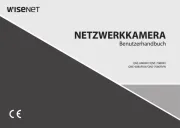
15 September 2025

2 September 2025
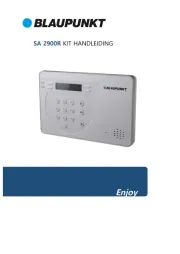
2 September 2025
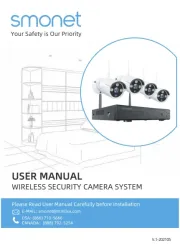
2 September 2025
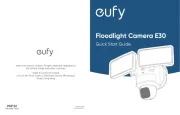
2 September 2025
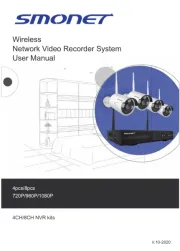
1 September 2025
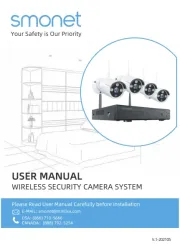
1 September 2025
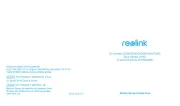
1 September 2025
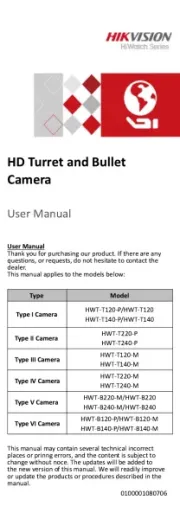
1 September 2025
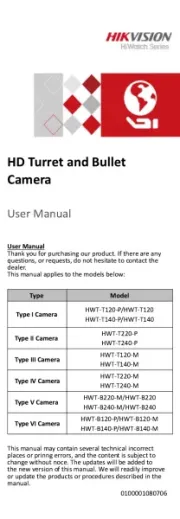
1 September 2025